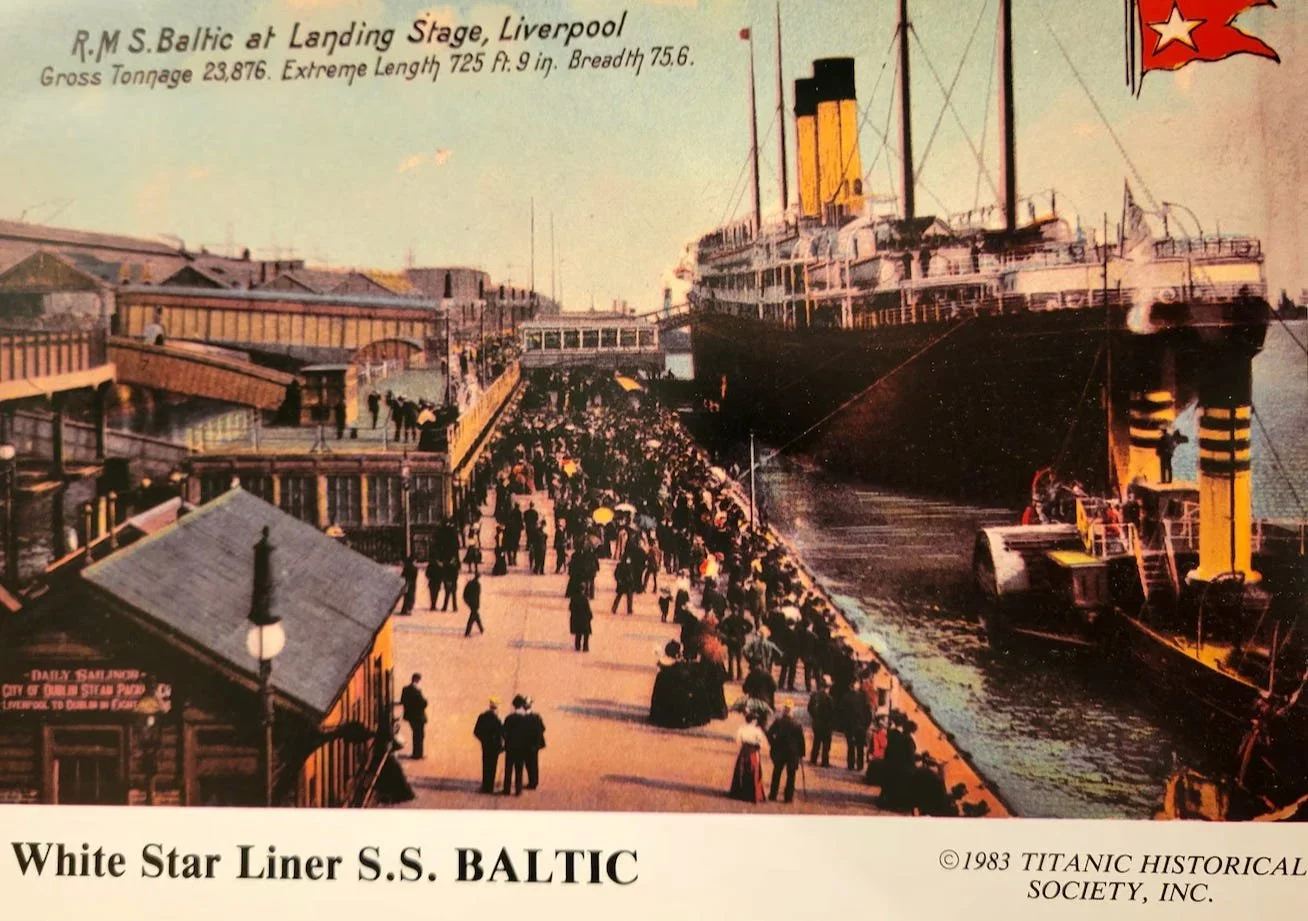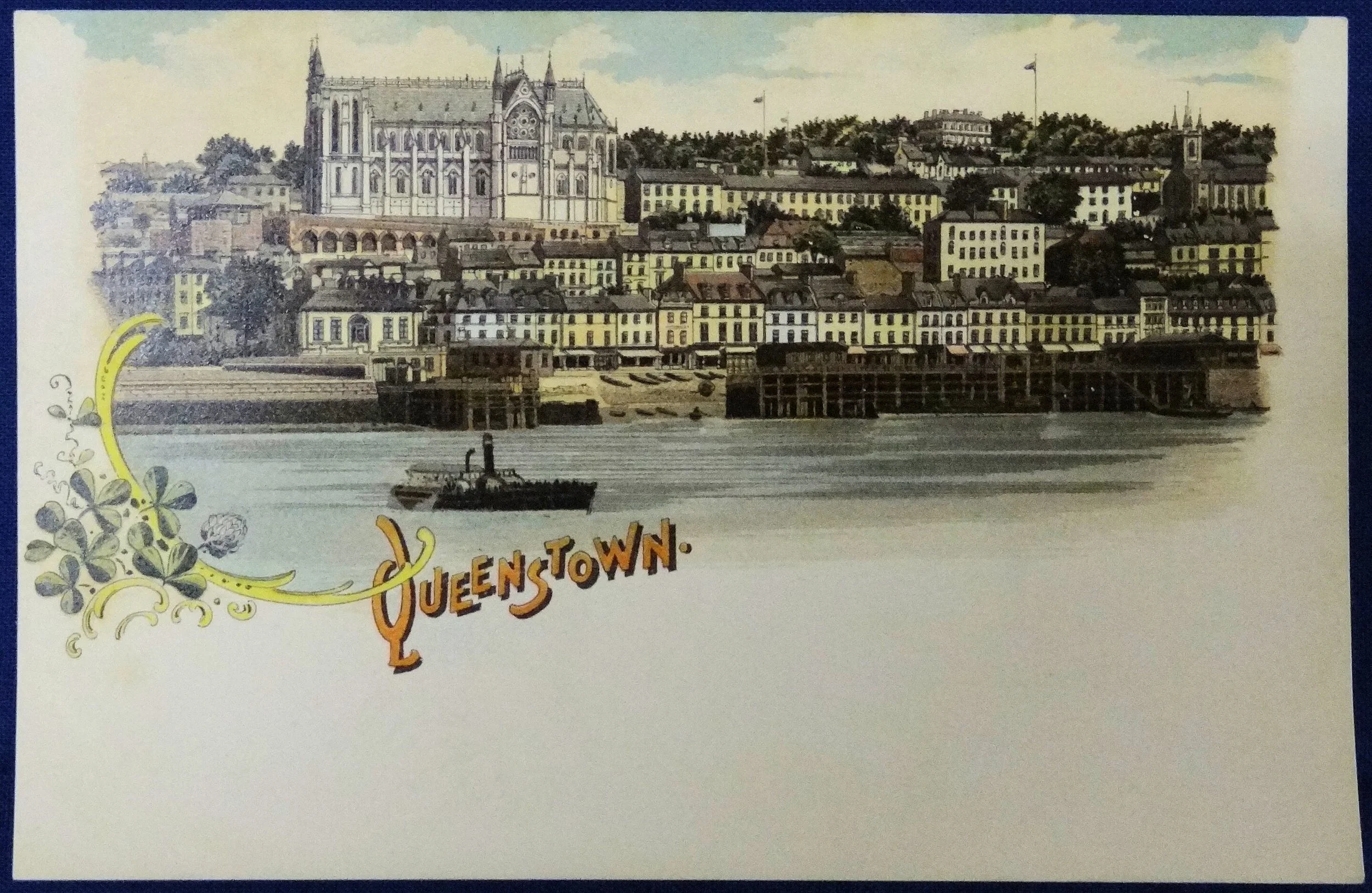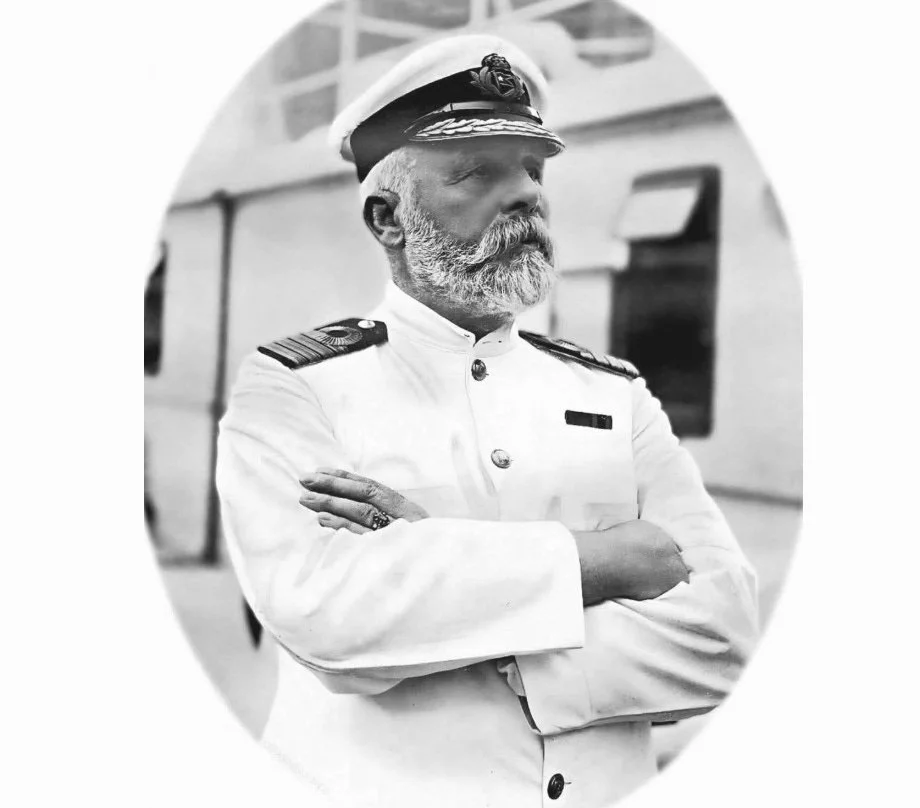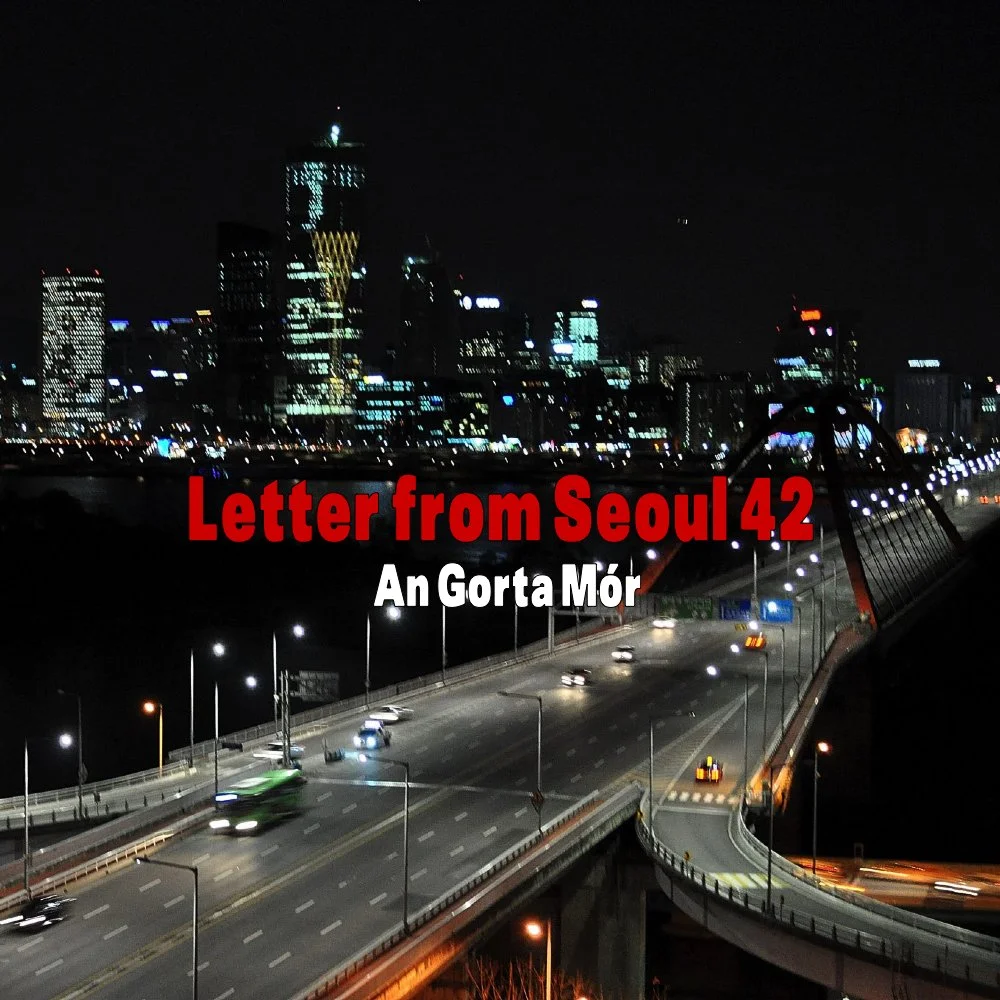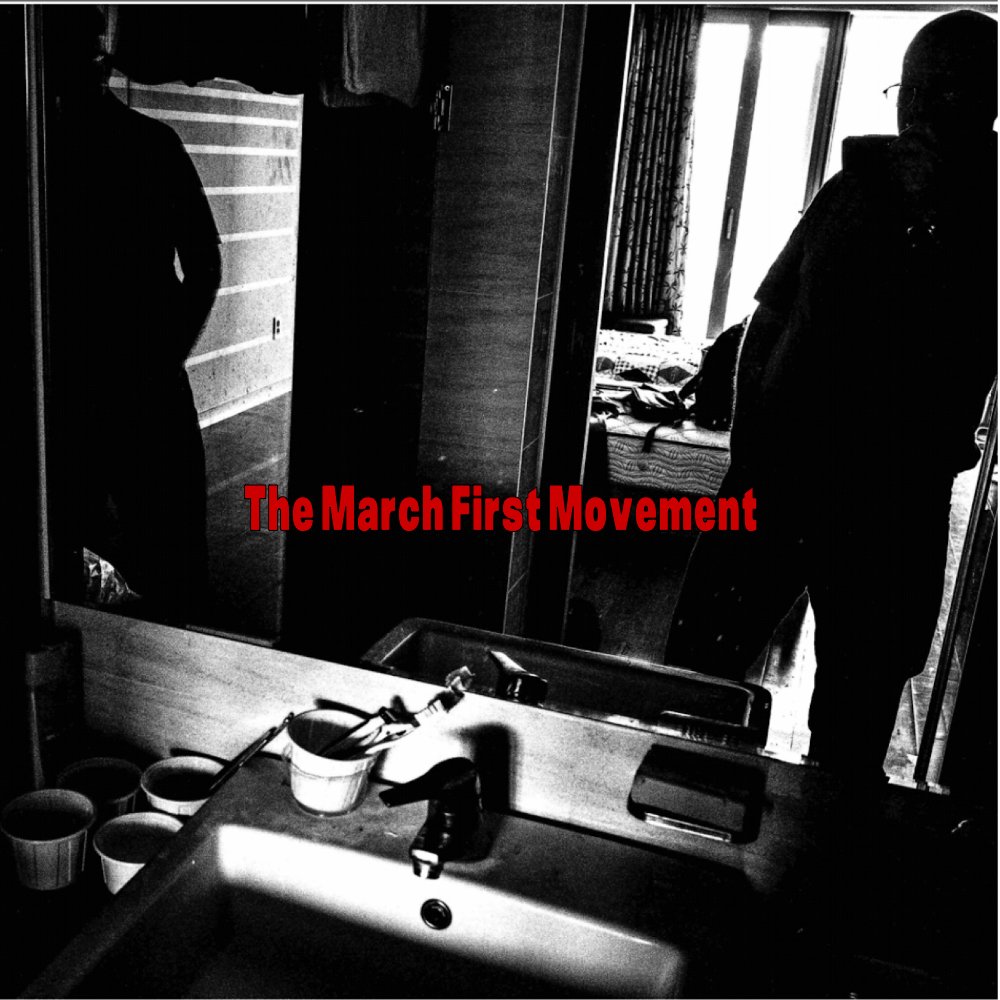Letter from Seoul 44
S. S. Baltic
Delia Higgins and her charges walked east along Westbourne Place, one of the busiest streets in Queenstown. The group consisted of Martin Kennedy and his eight-year-old sister, Ellen, and, of course, the 25-year-old Delia. There was also 18-year-old Mary Kelly, the niece of Kate Kennedy. Mary Kelly was from County Roscommon, just east of County Mayo.
Westbourne Place was an airy, spacious, well-proportioned thoroughfare. The sidewalks were wide and smooth and there was plenty of light by night and day. A double electric tramcar line ran along the middle of the street, and the posts which carried the overhead wires had large arc lamps. Seven other kinds of vehicles were prominent on Westbourne Place, including the automobile, the jaunting car, the landau, the brougham, the inside car, the hansom cab, and the covered car.
For several minutes, Martin stood and watched the people pass by, as if he really were a stranger on Earth. They were well-dressed, both men and women, and carried themselves gracefully.
From a nearby cellar grating floated up the flabby gush of porter. Through the open doorway of a bar squirted out whiffs of ginger, tea dust, biscuit mush. Later, the small group passed by a tobacconist against which news boards leaned and told of a dreadful catastrophe in New York City.
In America those things were constantly happening.
Moored under some nearby trees was a turf barge, a bargeman with a hat of dirty straw seated amid ship, smoking and staring at a branch of poplar above him.
Yet the unceremonious pushing and hustling that Martin received, soon recalled him from that reverie. Taking Ellen by the arm, Martin drew her along as if piloting her through danger.
At his age, Martin may have saved up three and ten pence in a red tin money box. If so, he shook out the three penny bits and a sixpence and coaxed out the pennies with the blade of a knife. Two and three in silver and one and seven in coppers. Later Martin may have purchased one and four pence worth of brawn and four slices of pan loaf at a Queenstown dining room.
Outside on Westbourne Place, Delia and the group walked past more Hackney carts, cabs, delivery wagons, mail-vans, and private broughams. Perhaps Martin stopped again and bought from an old apple woman two Banbury cakes for a penny.
The foursome walked by the tree shade of sunny winking leaves and towards them came a Sacsanach (English) sailor.
- Very well, indeed. And you?
The foursome was wonderfully well indeed. They would all go to St. Louis, Missouri. None of them ever planned to return to Ireland.
The group continued east, toward the Post Office building, at the intersection of Westbourne Place and Casement Square.
Banbury cake
Queenstown-to-New York City: New beginnings in America
Statue on the waterfront of Annie Moore and her brothers. Annie Moore was the first person to be admitted to the United States of America through the new immigration centre at Ellis Island, New York, on 1 January 1892.
The mid-19th century building was one of the busiest sites in Queenstown. In 1876 it housed the Post Office, the Postal Telegraph Office and the Government Emigration office. James Scott and Co., shipping agents, also had their office in the building. Scott and Co. were agents for the White Star Line and emigrants for White Star ships usually departed from the rear of the building. Delia Higgins and her group bought passage to New York City from Scott and Co., for the S.S. Baltic.
Thomas Henry Ismay purchased the White Star Line in 1867. Originally founded in 1850, the company offered sailing vessels engaged in trade based on the Australian goldfields. During the mid-19th century, the Cunard Shipping Line had been virtually unchallenged in the Atlantic passenger crossings. Yet in 1873, the S.S. Baltic set the eastbound Atlantic speed record.
For the next 20-years, the White Star Line continued to be Cunard's main rival and continually surpassed Cunard despite the fact that in 1873 the White Star ship Atlantic was wrecked.
In 1889, with the launch of the Teutonic and the Majestic, White Star introduced the modern ocean liner, a ship without sails. Soon luxury and size became more important than just speed.
Bruce Ismay joined the White Star company as a partner in 1891, and then assumed full control after his father's death in 1899.
Three years later, Ismay sold White Star to American financier J.P. Morgan, who became interested in Atlantic shipping companies for the large passenger trade based on immigration to the United States.
Cobh-Queenstown-Old-Postcard
Once described as the saddest place in Ireland, Queenstown was the embarkation point for the millions that left the country because of The Great Famine
In 1903, Harland & Wolff, of Belfast, built a modern “Baltic” for the White Star Line. She was a 23,876 gross ton ship, length 709.2ft by beam 75.6ft, two funnels, four masts, twin screw and a speed of 17 knots. There were accommodations for 425 first class, 450 second class and 2,000 third class passengers.
Launched on November 21, 1903, the S.S. Baltic sailed from Liverpool on her maiden voyage to New York on June 29, 1904.
On Thursday, June 21, 1906, the S.S. Baltic docked in Queenstown harbor, ready to sail, with clouds of smoke pouring from its two funnels.
The ship originated in Liverpool the day before, with 1,619 passengers already on board. Many of the travelers were from the United Kingdom, but others were from Norway, Sweden, Denmark, Poland, Russia, and Persia. One servant was from Japan. After the 208 outgoing Irish immigrants took a tender to the ship near the harbor entrance, people hurried to their quarters.
Captain Edward J. Smith and the crew ignored all inquiries from people who constantly bumped into one another; and the din merged into the hissing steam, which, escaping through some iron plates, wrapped the whole scene in a white mist, while the bell in the bows went on clanging incessantly.
The 53-year-old Captain Edward J. Smith was the master of the S.S. Baltic and commodore of the White Star fleet. He was a quiet man with shaggy eyebrows. Captain Smith, starting out in sail, had earned his master's certificate at the age of 25 and had served 26 years with White Star. He was known as a prudent, experienced seaman.
Captain Edward Smith, the master of the S. S. Baltic
Yet Captain Smith's career ended tragically six years later as the master of the Titanic. When the Titanic hit an iceberg at 11:48 p.m., April 14, 1912, off the Grand Banks of Newfoundland, the S.S. Baltic was 200 miles to the southeast, and could not arrive in time to help.
The Titanic sank at 2:20 a.m., April 15, 1912, at a depth of 13,000 feet. The disaster resulted in the loss of 1,513 lives. Thirteen people from the Castlebar area of County Mayo died in the tragedy.
For the trip to New York City in the third week of June, 1906, the Baltic's physician, Dr. William Ezra Graham, was available for all emergencies. Dr. Graham earned his degree from the University of Toronto, and practiced medicine in London for six years before joining the White Star fleet.
At last the boat moved off; and the two banks, lined with English military barracks, the English naval depot, and the English powder magazine on Rocky Island, slipped past like two wide ribbons being unwound as the S.S. Baltic passed by St. Colman's Gothic Cathedral along the seaport, navigated past the two English forts on Roche's Point and entered the St. George Channel for the voyage to America.
There was a sharp bracing air; the sea was crisp and clear; the sun diffused an abundance of light; and everything was fresh and lively. Many of the first-class passengers read the latest penny edition of the Cork Examiner, the daily newspaper for the Cork Harbor. Summer began in Southern Ireland on Thursday, June 21, 1906, at 9 p.m.
